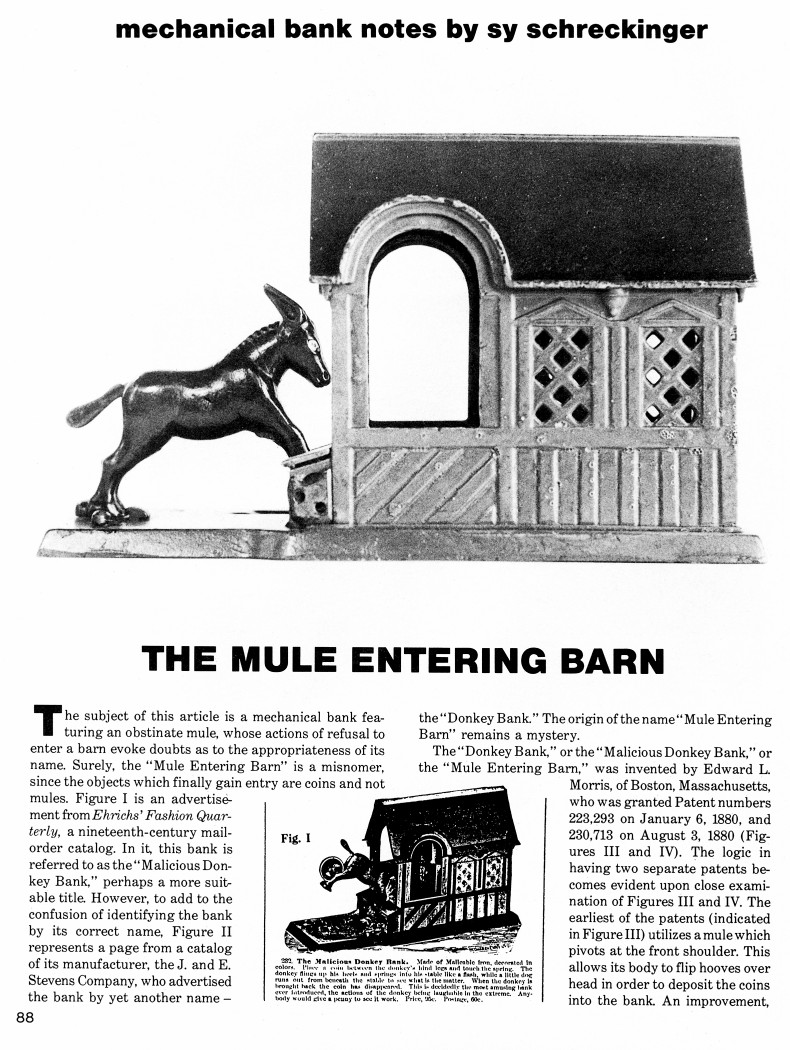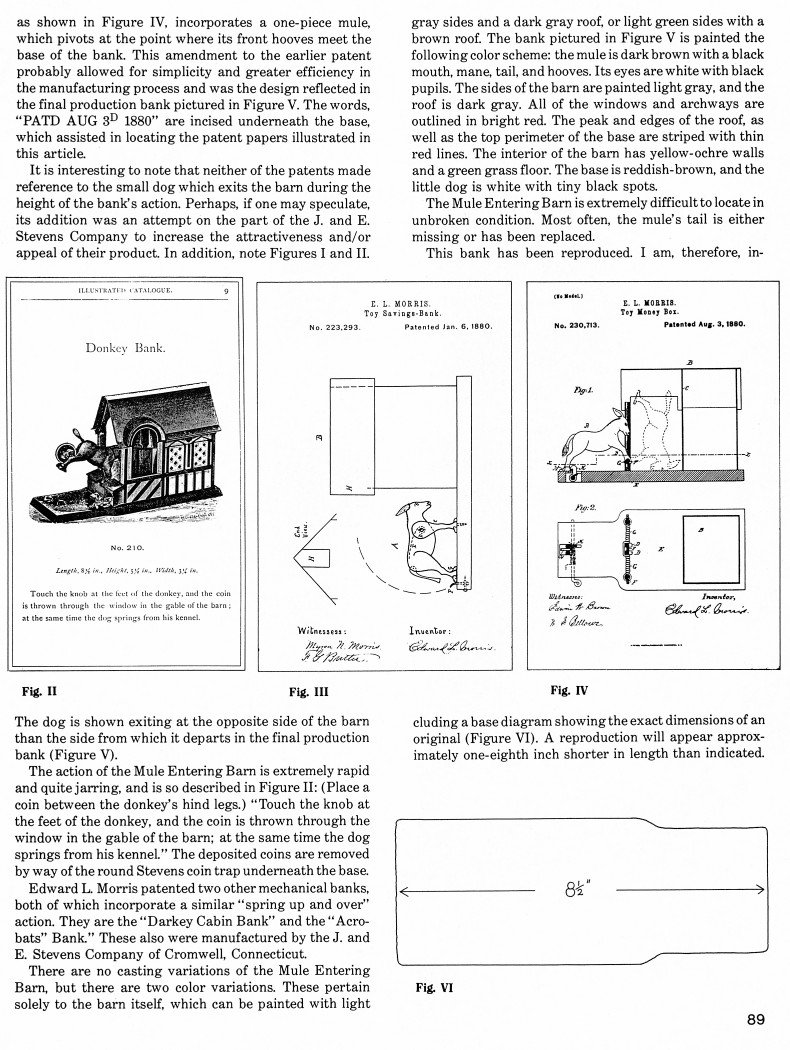|
The Mule Entering Barn
by Sy Schreckinger – ANTIQUE TOY WORLD Magazine – June, 1987
The subject of this
article is a mechanical bank featuring an obstinate mule, whose actions
of refusal to enter a barn evoke doubts as to the appropriateness of its
name. Surely, the "Mule Entering Barn" is a misnomer, since the objects
which finally gain entry are coins and not mules. Figure I is an
advertisement from Ehrichs' Fashion Quarterly, a nineteenth-century
mail-order catalog. In it, this bank is referred to as the "Malicious
Donkey Bank," perhaps a more suitable title. However, to add to the
confusion of identifying the bank by its correct name, Figure II
represents a page from a catalog of its manufacturer, the J. and E.
Stevens Company, who advertised the bank by yet another name — the "Donkey
Bank." The origin of the name "Mule Entering Barn" remains a mystery.
The "Donkey Bank," or the "Malicious Donkey Bank," or the "Mule
Entering Barn," was invented by Edward L. Morris, of Boston,
Massachusetts, who was granted Patent numbers
223,293 on January 6, 1880,
and
230,713 on August 3, 1880 (Figures III and IV). The logic in having
two separate patents becomes evident upon close examination of Figures III
and IV. The earliest of the patents (indicated in Figure III) utilizes a
mule which pivots at the front shoulder. This allows its body to flip hooves over head in order to deposit the coins
into the bank. An improvement, as shown in Figure IV, incorporates a
one-piece mule, which pivots at the point where its front hooves meet the
base of the bank. This amendment to the earlier patent probably allowed
for simplicity and greater efficiency in the manufacturing process and was
the design reflected in the final production bank pictured in Figure V.
The words, "PATD AUG 3D 1880" are incised underneath the base, which
assisted in locating the patent papers illustrated in this article.
It is interesting to note that neither of the patents made reference
to the small dog which exits the barn during the height of the bank's
action. Perhaps, if one may speculate, its addition was an attempt on the
part of the J. and E. Stevens Company to increase the attractiveness
and/or appeal of their product. In addition, note Figures I and II. The
dog is shown exiting at the opposite side of the barn than the side from
which it departs in the final production bank (Figure V).
The action of the Mule Entering Barn is extremely rapid and quite
jarring, and is so described in Figure II: (Place a coin between the
donkey's hind legs.) "Touch the knob at the feet of the donkey, and the
coin is thrown through the window in the gable of the barn; at the same
time the dog springs from his kennel." The deposited coins are removed by
way of the round Stevens coin trap underneath the base.
Edward L. Morris patented two other mechanical banks, both of which
incorporate a similar "spring up and over" action. They are the "Darkey
Cabin Bank" and the "Acrobats" Bank." These also were manufactured by the
J. and E. Stevens Company of Cromwell, Connecticut.
There are no casting variations of the Mule Entering Barn, but there
are two color variations. These pertain solely to the barn itself, which
can be painted with light gray sides and a dark gray roof, or light green
sides with a brown roof. The bank pictured in Figure V is painted the
following color scheme: the mule is dark brown with a black mouth, mane,
tail, and hooves. Its eyes are white with black pupils. The sides of the
barn are painted light gray, and the roof is dark gray. All of the windows
and archways are outlined in bright red. The peak and edges of the roof,
as well as the top perimeter of the base are striped with thin red lines.
The interior of the barn has yellow-ochre walls and a green grass floor.
The base is reddish-brown, and the little dog is white with tiny black
spots.
The Mule Entering Barn is extremely difficult to locate in unbroken
condition. Most often, the mule's tail is either missing or has been
replaced.
This bank has been reproduced. I am, therefore, including a base
diagram showing the exact dimensions of an original (Figure VI). A
reproduction will appear approximately one-eighth inch shorter in length
than indicated.
|


